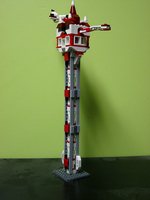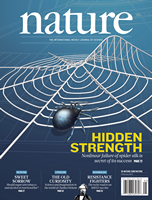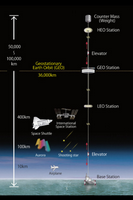 Once again, all together now;
Once again, all together now;
Happy birthday to you!
Happy birthday to you!
Happy birthday dear Space Elevator Blog!
Happy birthday to you!
Really, six years. I remember when I started this blog. I was recovering from some fairly major surgery and was sitting at my computer, just poking around the ‘net, looking for something interesting to read. I had just re-read Sir Arthur C. Clarke’s The Fountains of Paradise and wanted to know what was going on in the “Space Elevator Community”. I found a few sites and several postings, but nothing that seemed to bring everything together. I had authored a blog before, and so wasn’t new to the field, so I decided to start a “Space Elevator Blog”. Being the creative guy that I am, I named it “The Space Elevator Blog”.
The idea of a Space Elevator continues to grow and I’m proud to say that the International Space Elevator Consortium (ISEC) is playing a leading role in this. ISEC, along with the Japan Space Elevator Association and EuroSpaceward, are the leading proponents of this idea; pushing it forward, introducing new concepts and working towards that day when a Space Elevator a reality.
In keeping with tradition, I would list the highlights of the last 12 months as follows:
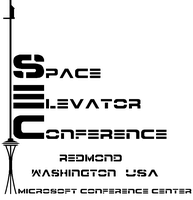 The 2011 Space Elevator Conference. ISEC funded the visits of several Carbon nanotube (CNT) experts to the Conference. All of them presented papers on the current ‘state-of-the-art’ in CNT development. We also heard our first inkling of a possible alternative to CNTs, that being Boron Nitride Nanotubes (BNNTs). This substance, something which does not occur in nature, has 95% of the theoretical strength of CNTs. Options are good! The 2011 Conference also the introduction of its first ever “Family Day” where children were able to build Lego Climbers and enter them into a competition held at the Conference. This idea was first fostered by the Japan Space Elevator Association and their annual LASER competition.
The 2011 Space Elevator Conference. ISEC funded the visits of several Carbon nanotube (CNT) experts to the Conference. All of them presented papers on the current ‘state-of-the-art’ in CNT development. We also heard our first inkling of a possible alternative to CNTs, that being Boron Nitride Nanotubes (BNNTs). This substance, something which does not occur in nature, has 95% of the theoretical strength of CNTs. Options are good! The 2011 Conference also the introduction of its first ever “Family Day” where children were able to build Lego Climbers and enter them into a competition held at the Conference. This idea was first fostered by the Japan Space Elevator Association and their annual LASER competition.
 The inaugural issue of CLIMB, the Space Elevator Journal, was published. As someone who was thoroughly immersed in all the details of this project, I have a new-found understanding and respect for Journal editors. It’s been a goal of ISEC to publish a Space Elevator Journal ever since it was founded and I’m glad that we have finally succeeded in this effort. It should be a great marketing tool for the Community and is another step forward for us on the road to ‘scientific respectability’ (or something like that). The print edition can be found here and the eVersion will be available on our website in the next several days.
The inaugural issue of CLIMB, the Space Elevator Journal, was published. As someone who was thoroughly immersed in all the details of this project, I have a new-found understanding and respect for Journal editors. It’s been a goal of ISEC to publish a Space Elevator Journal ever since it was founded and I’m glad that we have finally succeeded in this effort. It should be a great marketing tool for the Community and is another step forward for us on the road to ‘scientific respectability’ (or something like that). The print edition can be found here and the eVersion will be available on our website in the next several days.
 The Europeans held their first Space Elevator Games, 2011-EuSEC. With these Games, we now have space-elevator related competitions being held in the United States, Japan and Europe. Congratulations to those people at EuSEC who made this happen. The 2012 EuSEC Games are already scheduled and will be the subject of a future post.
The Europeans held their first Space Elevator Games, 2011-EuSEC. With these Games, we now have space-elevator related competitions being held in the United States, Japan and Europe. Congratulations to those people at EuSEC who made this happen. The 2012 EuSEC Games are already scheduled and will be the subject of a future post.
 The Japan Space Elevator Association held another LASER and another JSETEC competition. The Japanese are so, well, Japanese. They start out small but continue to build and grow and, before you know it, are world leaders in the areas they decide to concentrate in. I remember when I was on my ‘second tour’, living and working in Saudi Arabia. There were three of us, me (an American of course), a Brit and a Japanese national that hung around together. Our conversations often revolved around business strategies and the Japanese guy used to tell us that “We Japanese are farmers; we till and cultivate and prepare and eventually get a solid, sustainable ‘crop’. You Americans and Europeans are ‘slash-and-burn’ guys, just looking for the quick buck and then you move on.’ There was a lot of truth in that statement…
The Japan Space Elevator Association held another LASER and another JSETEC competition. The Japanese are so, well, Japanese. They start out small but continue to build and grow and, before you know it, are world leaders in the areas they decide to concentrate in. I remember when I was on my ‘second tour’, living and working in Saudi Arabia. There were three of us, me (an American of course), a Brit and a Japanese national that hung around together. Our conversations often revolved around business strategies and the Japanese guy used to tell us that “We Japanese are farmers; we till and cultivate and prepare and eventually get a solid, sustainable ‘crop’. You Americans and Europeans are ‘slash-and-burn’ guys, just looking for the quick buck and then you move on.’ There was a lot of truth in that statement…
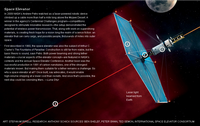 The Space Elevator was given a two-page spread in the world-renowned publication, the National Geographic Magazine. And, even more exciting, ISEC was mentioned as a ‘technical source’ for the article. Their monthly circulation is in the neighborhood of 8.5 million copies, of which ~40% reside outside of the United States. This was truly a coup for ISEC – being mentioned in such a widely read and prestigious publication as National Geographic will pay us many dividends, now and down the road…
The Space Elevator was given a two-page spread in the world-renowned publication, the National Geographic Magazine. And, even more exciting, ISEC was mentioned as a ‘technical source’ for the article. Their monthly circulation is in the neighborhood of 8.5 million copies, of which ~40% reside outside of the United States. This was truly a coup for ISEC – being mentioned in such a widely read and prestigious publication as National Geographic will pay us many dividends, now and down the road…
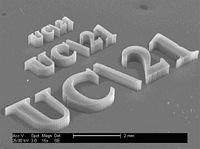 The University of Cincinnati and the Air Force Research Laboratory hosted the annual Nanotechnology Workshop on the campus of the University of Cincinnati. I attended this workshop in 2010 and, while it was absolutely fascinating, I was disappointed to see so little emphasis placed on the specific strength properties of CNTs. Almost all of the presentations dealt with the electrical properties of CNTs or infusing ceramics with CNTs to create novel, new materials or forming CNTs into unique structures, etc. The 2011 Workshop, however, was a different beast altogether. At least half of the presentations at least mentioned the specific strength properties of CNTs and a few of the presentations focused on this aspect entirely. It seems that academia has finally turned its attention to this possibility and I think that only good things can come from it. And, I was allowed to present the idea of a Strong Tether Competition to the attendees, something which I hope will bear fruit in the not-too-distant future…
The University of Cincinnati and the Air Force Research Laboratory hosted the annual Nanotechnology Workshop on the campus of the University of Cincinnati. I attended this workshop in 2010 and, while it was absolutely fascinating, I was disappointed to see so little emphasis placed on the specific strength properties of CNTs. Almost all of the presentations dealt with the electrical properties of CNTs or infusing ceramics with CNTs to create novel, new materials or forming CNTs into unique structures, etc. The 2011 Workshop, however, was a different beast altogether. At least half of the presentations at least mentioned the specific strength properties of CNTs and a few of the presentations focused on this aspect entirely. It seems that academia has finally turned its attention to this possibility and I think that only good things can come from it. And, I was allowed to present the idea of a Strong Tether Competition to the attendees, something which I hope will bear fruit in the not-too-distant future…
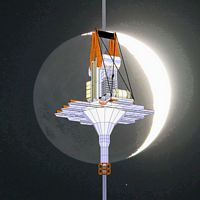 The phoenix-like return of LiftPort. They are now concentrating on promoting the idea of a Lunar Space Elevator. It’s great to see that Michael Laine is still involved in the whole space elevator enterprise. His name is the most-recognized one in the field. Every time I put up a post which mentions his name, my readership spikes.
The phoenix-like return of LiftPort. They are now concentrating on promoting the idea of a Lunar Space Elevator. It’s great to see that Michael Laine is still involved in the whole space elevator enterprise. His name is the most-recognized one in the field. Every time I put up a post which mentions his name, my readership spikes.
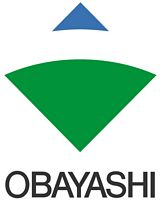 Other highlights include ISEC becoming an officially recognized 501c3 corporation, the initial release of Maurice Franklin’s Space Elevator Analysis Spreadsheet, the porting of the Space Elevator Pocketbook to the iPhone, being mentioned in the new coffee-table book The Cult of Lego, Jerome Pearson’s EDDE project finally getting some government funding, Japan’s Obayashi Corporation announcing their intention to build a Space Elevator by the year 2050 and the release of the 2011 ISEC Theme Poster.
Other highlights include ISEC becoming an officially recognized 501c3 corporation, the initial release of Maurice Franklin’s Space Elevator Analysis Spreadsheet, the porting of the Space Elevator Pocketbook to the iPhone, being mentioned in the new coffee-table book The Cult of Lego, Jerome Pearson’s EDDE project finally getting some government funding, Japan’s Obayashi Corporation announcing their intention to build a Space Elevator by the year 2050 and the release of the 2011 ISEC Theme Poster.
Disappointments include the lack of progress in the Strong Tether Competition, no ISEC report for 2011 (although the 2012 report on Operating and Maintaining a Space Elevator is well on its way) and the very sad passing of Gaylen Hinton, the first ever recipient of an Honorable Mention in the Artsutanov Prize competition.
What will the next 12 months bring? Well, it’s fairly safe to say that there will be a 2012 Space Elevator Conference, we will have Space Elevator related competitions in the US, Japan and Europe, we should see the second issue of CLIMB and the 2012 ISEC Report. And, I’m sure that there will be many other developments that will be a surprise…
Stay tuned!
(5 year anniversary post here. 4 year anniversary post here. 3 year anniversary post here. 2 year anniversary post here. 1 year anniversary post here.)
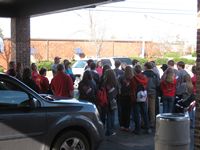

 The
The  It’s official – the 2013
It’s official – the 2013  I’m a bit behind posting this – the October updates from our
I’m a bit behind posting this – the October updates from our 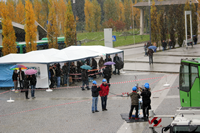
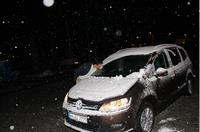

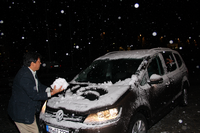
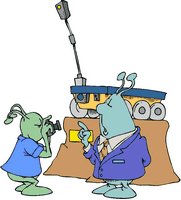 I just found out that Devin Jacobson, a member of the
I just found out that Devin Jacobson, a member of the 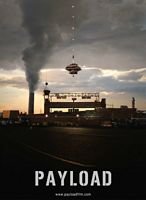 There is a new
There is a new 

 With Yi-Jeng heading up the effort, I’m confident that ISEC’s eNewsletter will get better by orders of magnitude in the very near future.
With Yi-Jeng heading up the effort, I’m confident that ISEC’s eNewsletter will get better by orders of magnitude in the very near future.



 For the Strong Tether Challenge, however, the
For the Strong Tether Challenge, however, the  Here is a list of the majority of articles that covered the recently completed
Here is a list of the majority of articles that covered the recently completed 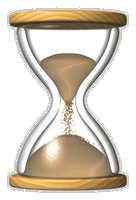 I
I 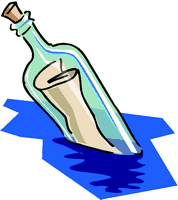 The current issue of the ISEC eNewsletter has been released. This newsletter contains a wrap-up of the just-completed Space Elevator conference, a status update on LiftPort’s
The current issue of the ISEC eNewsletter has been released. This newsletter contains a wrap-up of the just-completed Space Elevator conference, a status update on LiftPort’s  In the current online issue of Scientific American, science writer David Appell
In the current online issue of Scientific American, science writer David Appell 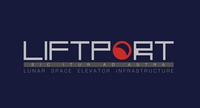 As part of the “LiftPort 2.0” relaunch, Michael Laine and company have created a
As part of the “LiftPort 2.0” relaunch, Michael Laine and company have created a  I spent some time with Michael at the recent Space Elevator Conference (posts about this Conference are coming soon – promise!) and it was very good to interact with him again. He’s a dynamic force in the community and I’m glad he’s back.
I spent some time with Michael at the recent Space Elevator Conference (posts about this Conference are coming soon – promise!) and it was very good to interact with him again. He’s a dynamic force in the community and I’m glad he’s back.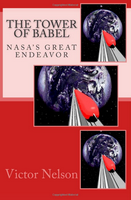 Earth has survived into the third decade of the twenty-first century, but the United States and Communist China have become embroiled in a deadly space race. Whoever succeeds will have a dominant advantage in colonizing Mars and producing military bases in deep space and on Earth’s moon. Although the Chinese have a head start with their project, a recently revivified NASA has developed new technologies that will gain for them a competitive edge. The Chinese will stop at nothing to obtain this classified information and to destroy the American scientific leadership. Magnus Kolden, a brilliant scientist, was oblivious to the ominous signs of trouble and disaster when he was appointed as NASA’s project leader. He has never had an interest in the military applications of this technology, but only in its use for the advancement of science. Nevertheless, he will have to lead the Americans to victory in the largest space endeavor in the history of humankind. A life-long dream of creating a better way to travel into deep space has come with a heavy price. Magnus finds himself pitted against a ruthless enemy agent organization and also against Islamic extremist terrorists. Both organizations will stop at nothing to terminate his pursuits. He is fighting for the safety of his family, his life, and his dreams. Many internal and external forces may sabotage his success. A cataclysmic event will change the course of the story. What revelation will be thrust upon Magnus Kolden?
Earth has survived into the third decade of the twenty-first century, but the United States and Communist China have become embroiled in a deadly space race. Whoever succeeds will have a dominant advantage in colonizing Mars and producing military bases in deep space and on Earth’s moon. Although the Chinese have a head start with their project, a recently revivified NASA has developed new technologies that will gain for them a competitive edge. The Chinese will stop at nothing to obtain this classified information and to destroy the American scientific leadership. Magnus Kolden, a brilliant scientist, was oblivious to the ominous signs of trouble and disaster when he was appointed as NASA’s project leader. He has never had an interest in the military applications of this technology, but only in its use for the advancement of science. Nevertheless, he will have to lead the Americans to victory in the largest space endeavor in the history of humankind. A life-long dream of creating a better way to travel into deep space has come with a heavy price. Magnus finds himself pitted against a ruthless enemy agent organization and also against Islamic extremist terrorists. Both organizations will stop at nothing to terminate his pursuits. He is fighting for the safety of his family, his life, and his dreams. Many internal and external forces may sabotage his success. A cataclysmic event will change the course of the story. What revelation will be thrust upon Magnus Kolden? Space Elevator Conference chair David Horn was interviewed by BBC’s Richard Hollingham recently and the result of that interview is posted
Space Elevator Conference chair David Horn was interviewed by BBC’s Richard Hollingham recently and the result of that interview is posted 

 Planning for the 2012 European Space Elevator Challenge (EuSPEC) is well underway. This is the second year this competition is being held and it will occur October 25th through the 28th in Munich, Germany.
Planning for the 2012 European Space Elevator Challenge (EuSPEC) is well underway. This is the second year this competition is being held and it will occur October 25th through the 28th in Munich, Germany. This coming Monday, July 16th, from 2pm to 3:30pm Pacific time, Dr. Bryan Laubscher, astrophysicist and
This coming Monday, July 16th, from 2pm to 3:30pm Pacific time, Dr. Bryan Laubscher, astrophysicist and  Just a reminder that July 15th is absolutely, positively the very last day you can sign-up to attend the upcoming
Just a reminder that July 15th is absolutely, positively the very last day you can sign-up to attend the upcoming  A few days ago, I
A few days ago, I  Only six more days until the “Early Bird” registrations for the 2012 Space Elevator Conference, with significant reductions over the standard registration rates, expire.
Only six more days until the “Early Bird” registrations for the 2012 Space Elevator Conference, with significant reductions over the standard registration rates, expire. Veterans of the Spaceward’s Foundation Space Elevator Games have the pleasure of knowing Vern McGeorge. He’s one of those guys who works tirelessly behind the scenes getting stuff done, getting stuff made, getting stuff fixed, so that the competitions can go on. I have blogged about Vern’s contributions
Veterans of the Spaceward’s Foundation Space Elevator Games have the pleasure of knowing Vern McGeorge. He’s one of those guys who works tirelessly behind the scenes getting stuff done, getting stuff made, getting stuff fixed, so that the competitions can go on. I have blogged about Vern’s contributions 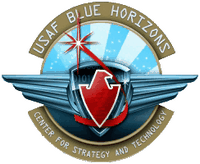 While reviewing some of the older Space Elevator Conference programs and trying to see if some of the presenters were still active in the SE arena, I ran across this 2007 paper by Major Jason Kent.
While reviewing some of the older Space Elevator Conference programs and trying to see if some of the presenters were still active in the SE arena, I ran across this 2007 paper by Major Jason Kent. This August the KC Space Pirates will take the next step in the development of laser powered flight and in the art of wireless power beaming. We will attempt to keep a one pound robotic aircraft flying for 2 full days (48 hours), nearly 4 times the previous world record…The date of this attempt is set to coincide with the International Space Elevator Consortium’s (www.isec.org)
This August the KC Space Pirates will take the next step in the development of laser powered flight and in the art of wireless power beaming. We will attempt to keep a one pound robotic aircraft flying for 2 full days (48 hours), nearly 4 times the previous world record…The date of this attempt is set to coincide with the International Space Elevator Consortium’s (www.isec.org)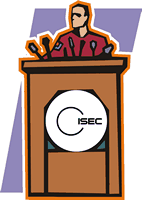 Registration
Registration Hot off the press is the
Hot off the press is the 
 An electronic, pdf version of CLIMB, the Space Elevator Journal, is now available. For those of you who didn’t want to pay for the print version, you can purchase an electronic version for only $1.99.
An electronic, pdf version of CLIMB, the Space Elevator Journal, is now available. For those of you who didn’t want to pay for the print version, you can purchase an electronic version for only $1.99. Once again, all together now;
Once again, all together now; The
The  The Japan Space Elevator Association held another
The Japan Space Elevator Association held another 
 The University of Cincinnati and the Air Force Research Laboratory hosted the annual
The University of Cincinnati and the Air Force Research Laboratory hosted the annual  The phoenix-like return of
The phoenix-like return of  Other highlights include ISEC becoming an officially recognized
Other highlights include ISEC becoming an officially recognized  This coming August, the
This coming August, the  The next space elevator competition here looks like it will be the first week of August 8/1-8/5. We will probably have a narrower/thicker tether 25mm x 1.2mm, and plan to get up past 1km this time. There is quite a bit of activity due to the recent report from Obayashi Consortium that they plan to build a space elevator by 2050.
The next space elevator competition here looks like it will be the first week of August 8/1-8/5. We will probably have a narrower/thicker tether 25mm x 1.2mm, and plan to get up past 1km this time. There is quite a bit of activity due to the recent report from Obayashi Consortium that they plan to build a space elevator by 2050. A new game, Mechanic Panic, has been issued for Apple platforms (iPad, iPod Touch, iPhone) with the Space Elevator as a backdrop and, guess, what, the Space Elevator gets destroyed – how original! From the game description:
A new game, Mechanic Panic, has been issued for Apple platforms (iPad, iPod Touch, iPhone) with the Space Elevator as a backdrop and, guess, what, the Space Elevator gets destroyed – how original! From the game description: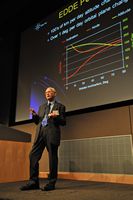
 When the International Space Elevator Consortium (ISEC) was first formed, the only website available with the ISEC acronym was
When the International Space Elevator Consortium (ISEC) was first formed, the only website available with the ISEC acronym was 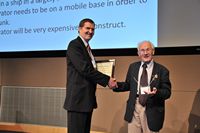

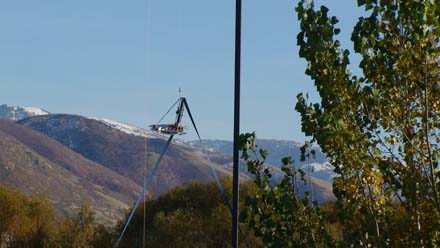
 Tomorrow, Friday, March 2nd, beginning at 1pm Eastern (10am Pacific),
Tomorrow, Friday, March 2nd, beginning at 1pm Eastern (10am Pacific), 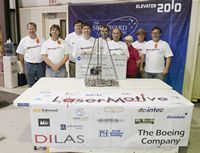
 Just released – the ISEC
Just released – the ISEC  Robert Gonzalez from io9
Robert Gonzalez from io9 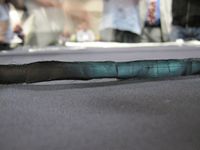
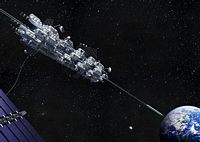
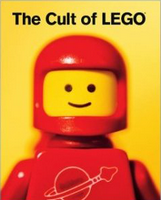 Over the past several years, I have posted multiple entries on this blog about Space Elevators and Legos. The two seem to go together like fish and chips or ham and eggs or Kim Kardashian and Kris Humphries. Oh, wait…
Over the past several years, I have posted multiple entries on this blog about Space Elevators and Legos. The two seem to go together like fish and chips or ham and eggs or Kim Kardashian and Kris Humphries. Oh, wait…